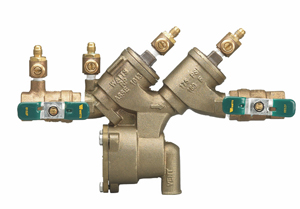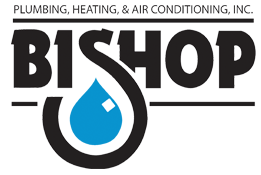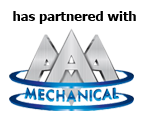Backflow Devices / Backflow Preventers
Backflow Devices Protect Aspen, Snowmass & Rifle Water Supplies from Contamination
 Backflow can occur in these events: reduced water pressure in the main draws water from the house in the main caused by a break or pumping during a fire. Backflow can cause dangerous chemicals to enter the drinking water supply causing serious harm or fatal injuries. Backflow devices prevent contamination caused by cross-connections. The Safe Drinking Water Act, signed into law by President Ford, placed more emphasis on the responsibility for drinking water protection so water is not contaminated with gasses, industrial fluids, or any substance other than potable water into the distribution pipes of the potable water system.
Backflow can occur in these events: reduced water pressure in the main draws water from the house in the main caused by a break or pumping during a fire. Backflow can cause dangerous chemicals to enter the drinking water supply causing serious harm or fatal injuries. Backflow devices prevent contamination caused by cross-connections. The Safe Drinking Water Act, signed into law by President Ford, placed more emphasis on the responsibility for drinking water protection so water is not contaminated with gasses, industrial fluids, or any substance other than potable water into the distribution pipes of the potable water system.
There are two types of backflow conditions that can occur, especially in Aspen and Vail: backpressure and back-siphonage. Backpressure occurs when the home or commercial building is at a higher pressure than the main supply of water. This can push undesirable substances into the water system. Backpressure can be caused by bad booster pumps, connections to boilers, and poorly installed or maintained plumbing. Of course, having a backflow preventer does not fix the plumbing problems; it just shuts down the system so no contamination occurs for other people in your neighborhood and city. One specific example of this would be a steam heating system with the make-up water line piped directly into the boiler. The higher pressure in the boiler could force the chemically treated boiler water back through the make-up water line and into the potable water system. Back-siphonage occurs when the home or commercial building is at a lower pressure than the main supply of water. This draws undesirable substances into the potable water system. Typical causes of back-siphonage are undersized pipes, line breaks, reduced supply system pressure on the suction side of an on-line booster pump, or sudden upstream high demand.
| Protect your backflow device in your Aspen or Snowmass Village CO home or business
Cross contamination can occur at the sink, in sprinkler systems, on pumps, and on hose bibs, just to name a few typical scenarios. A running spray hose in a sink can actually suck contaminated water back into the system if a loss in pressure occurs in the main water supply. A below-ground sprinkler head can back-siphon fertilizer and weed killers through a leaky valve into the potable water system. Fire sprinkler systems which have a hook-up for fire trucks to increase the pressure in the system can cause a “wetting agent” typically added to water in fire-fighting to pump this “wet” water back into the city’s domestic water supply. On a farm, an irrigation valve connected to domestic water supply (as a backup to ditch water) can contaminate potable water if there is a leaky or partially open valve to the pump from the city water. Hose bibs can contaminate the water supply when used to unblock a sewer line if there is a sudden drop in line pressure, causing dirty water to be back-siphoned into the potable water system.
Cities that require annual testing:
- Aspen
- Snowmass Village
- Rifle

